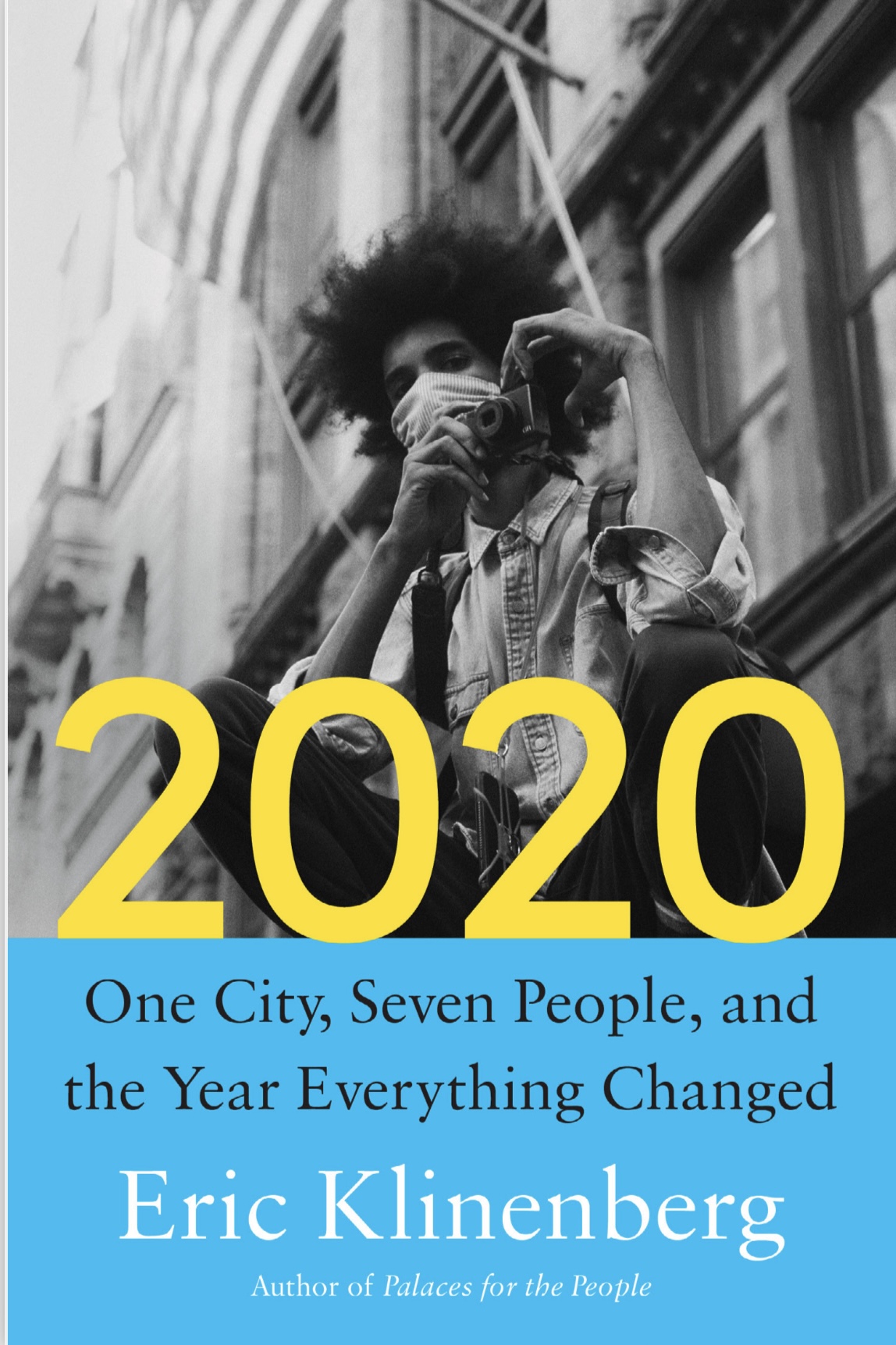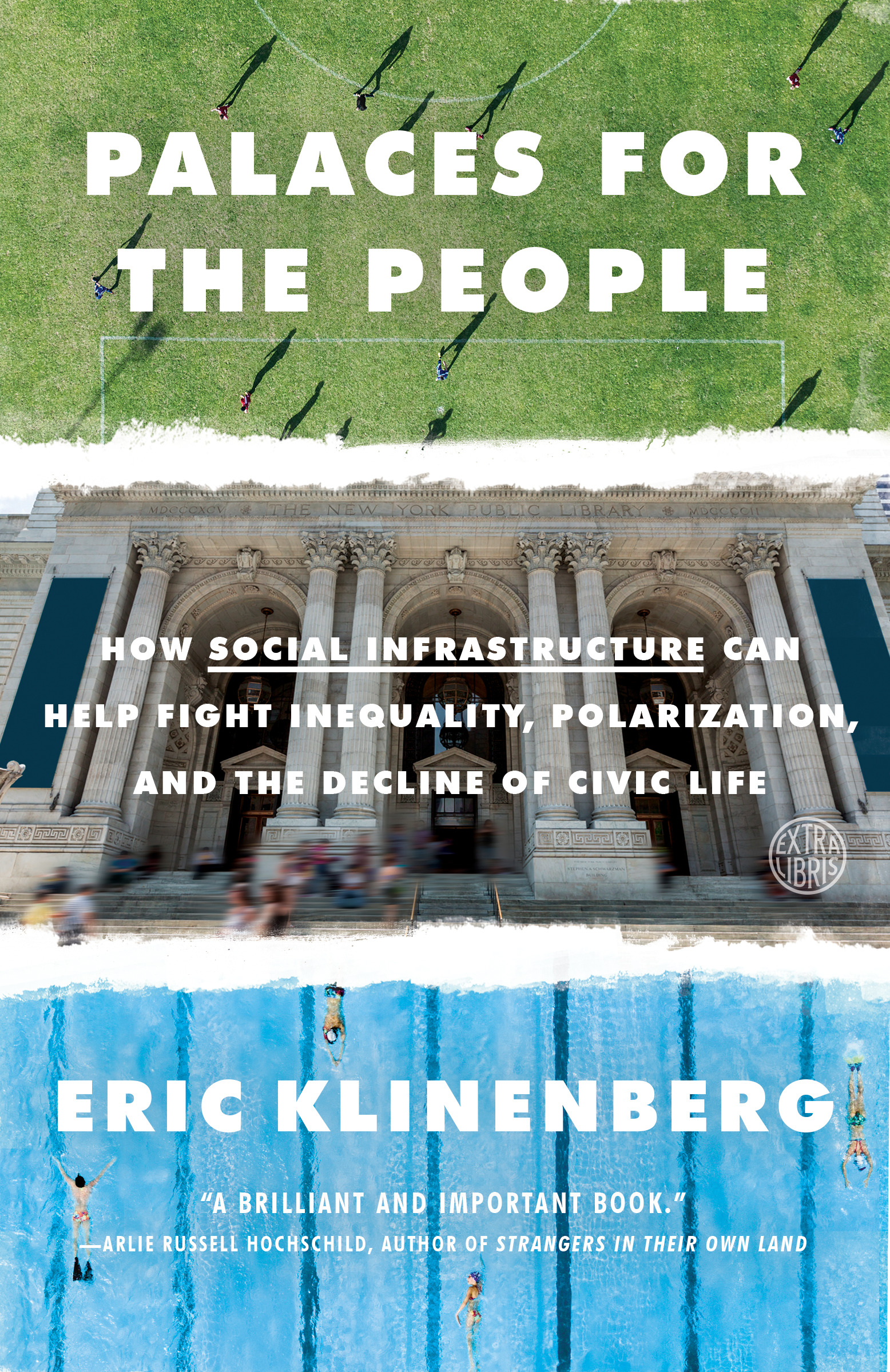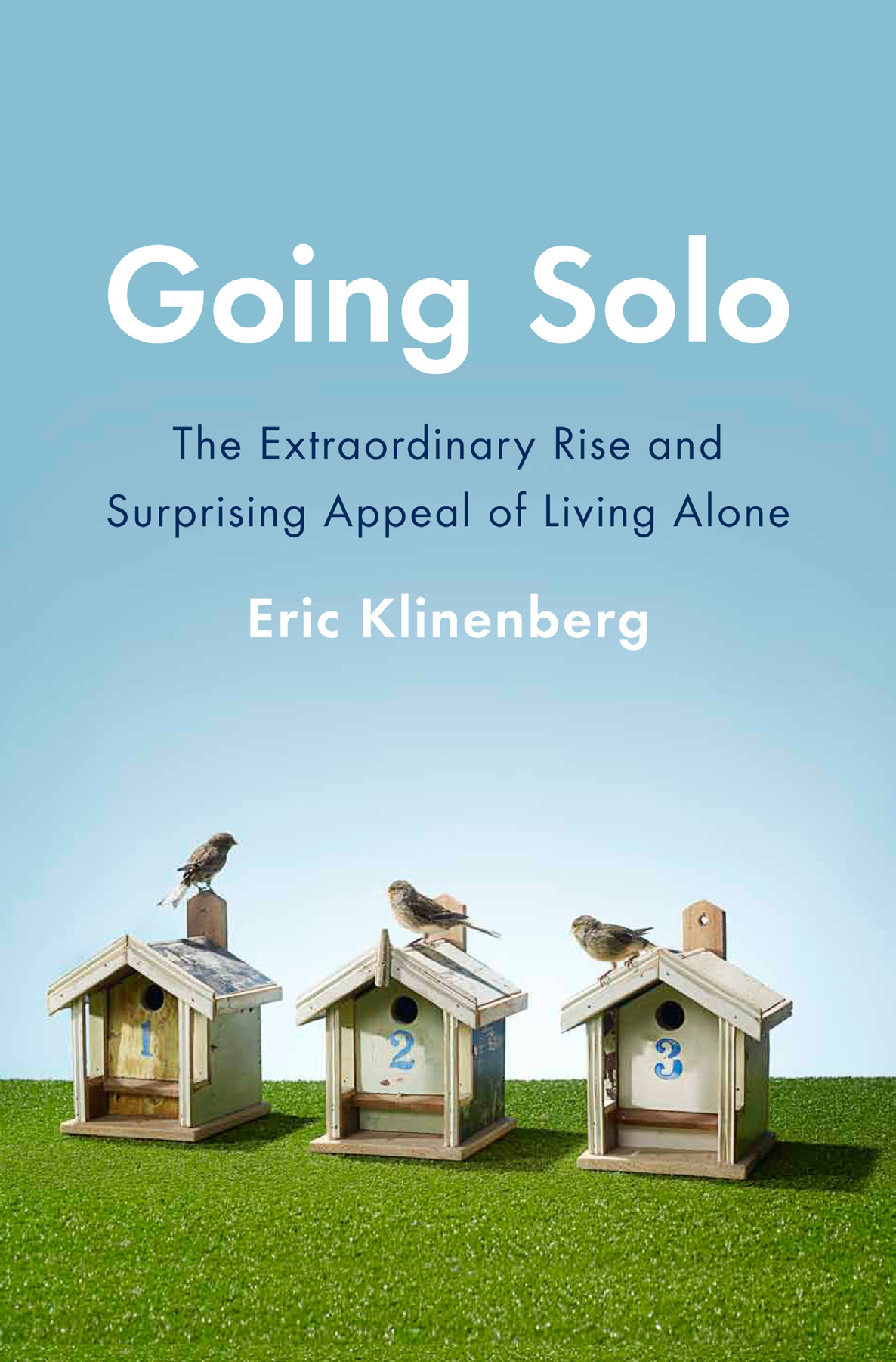-
2020: One City, Seven People, and the Year Everything Changed
2020 will go down alongside 1914, 1929, and 1968 as one of the most consequential years in history. This riveting and affecting book is the first attempt to capture the full human experience of that fateful time.
At the heart of 2020 are seven vivid profiles of ordinary New Yorkers—including an elementary school principal, a bar manager, a subway custodian, and a local political aide—whose experiences illuminate how Americans, andpeople across the globe, reckoned with 2020. Through these poignant stories, we revisit our own moments of hope and fear, the profound tragedies and losses in our communities, the mutual aid networks that brought us together, and the social movements that hinted at the possibilities of a better world.
Eric Klinenberg vividly captures these stories, casting them against the backdrop of a high-stakes presidential election, a surge of misinformation, rising distrust, and raging protests. We move from the epicenter in New York City to Washington and London, where political leaders made the crisis so much more lethal than it had to be. We bear witness to epidemiological battles in Wuhan and Beijing, along with the initiatives of scientists, citizens, and policy makers in Australia, Japan, and Taiwan, who worked together to save lives.
Klinenberg allows us to see 2020—and, ultimately, ourselves—with unprecedented clarity and empathy. His book not only helps us reckon with what we lived through, but also with the challenges we face before the next crisis arrives.
-
PALACES FOR THE PEOPLE: How Social Infrastructure Can Help Fight Inequality, Polarization, and the Decline of Civic Life
NOW IN PAPERBACK
“A comprehensive, entertaining, and compelling argument for how rebuilding social infrastructure can help heal divisions in our society and move us forward.” —Jon Stewart
NAMED ONE OF THE BEST BOOKS OF THE YEAR BY NPR • “Engaging.” —Mayor Pete Buttigieg, The New York Times Book Review (Editors’ Choice)
We are living in a time of deep divisions. Americans are sorting themselves along racial, religious, and cultural lines, leading to a level of polarization that the country hasn’t seen since the Civil War. Pundits and politicians are calling for us to come together and find common purpose. But how, exactly, can this be done?
In Palaces for the People, Eric Klinenberg suggests a way forward. He believes that the future of democratic societies rests not simply on shared values but on shared spaces: the libraries, childcare centers, churches, and parks where crucial connections are formed. Interweaving his own research with examples from around the globe, Klinenberg shows how “social infrastructure” is helping to solve some of our most pressing societal challenges. Richly reported and ultimately uplifting, Palaces for the People offers a blueprint for bridging our seemingly unbridgeable divides.
LONGLISTED FOR THE ANDREW CARNEGIE MEDAL FOR EXCELLENCE IN NONFICTION
“Just brilliant!” —Roman Mars, 99% Invisible
“The aim of this sweeping work is to popularize the notion of ‘social infrastructure’—the ‘physical places and organizations that shape the way people interact’. . . . Here, drawing on research in urban planning, behavioral economics, and environmental psychology, as well as on his own fieldwork from around the world, [Eric Klinenberg] posits that a community’s resilience correlates strongly with the robustness of its social infrastructure. The numerous case studies add up to a plea for more investment in the spaces and institutions (parks, libraries, childcare centers) that foster mutual support in civic life.” —The New Yorker
“Palaces for the People—the title is taken from the Scottish-American industrialist and philanthropist Andrew Carnegie’s description of the hundreds of libraries he funded—is essentially a calm, lucid exposition of a centuries-old idea, which is really a furious call to action.” —New Statesman
“Clear-eyed . . . fascinating.” —Psychology Today
-
GOING SOLO: The Extraordinary Rise and Surprising Appeal of Living Alone
A revelatory examination of the most significant demographic shift since the Baby Boom — the sharp increase in the number of people who live alone — that offers surprising insights on the benefits of this epochal change.
“Trailblazing.” Vanity Fair
“This book will change our lives…So important that it is likely to become both a popular read and a social science classic.” Psychology Today
“Fascinating.” Wall Street Journal
“Going Solo…is causing a sensation, both for how it has shaken up our traditional notions of the single life and as a sociological breakthrough.” Toronto Star
“Cliche-shattering.” Newsday
- Read an excerpt in The New York Times and Fortune.
- Read an author interview in Smithsonian Magazine.
- Listen to a story from Going Solo on This American Life.
- Watch Ray Suarez interview Eric Klinenberg on The Newshour.
-
FIGHTING FOR AIR: The Battle to Control America’s Media
A groundbreaking investigative work by a critically acclaimed sociologist on the corporate takeover of local news and what it means for all Americans.
For the residents of Minot, North Dakota, Clear Channel Communications is synonymous with disaster. Early in the morning of January 18, 2002, a train derailment sent a cloud of poisonous gas drifting toward the small town. Minot’s fire and rescue departments attempted to reach Clear Channel, which owned and operated all six local commercial radio stations, to warn residents of the approaching threat. But in the age of canned programming and virtual DJs, there was no one in the conglomerate’s studio to take the call. The people of Minot were taken unawares. The result: one death and more than a thousand injuries.
Opening with the story of the Minot tragedy, Fighting for Air takes us into the world of preprogrammed radio shows, empty television news stations, and copycat newspapers to show how corporate ownership and control of local media has remade American political and cultural life. Klinenberg argues that the demise of truly local media stems from the federal government’s malign neglect, as the agencies charged with ensuring diversity and open competition have ceded control to the very conglomerates that consistently undermine these values and goals.
Such “big media” may not be here to stay, however. Fighting for Air delivers a call to action, revealing a rising generation of new media activists and citizen journalists — a coalition of liberals and conservatives–who are demanding and even creating the local coverage they need and deserve.
- Bill Moyers interviewed Eric Klinenberg about Fighting for Air on the PBS special, The Net at Risk.
- Click here to see Klinenberg’s appearance on Democracy Now!
- Listen to an interview on National Public Radio.
- Read the Idea Lab story in the New York Times Magazine.
- Listen to an interview on National Public Radio.
-
HEAT WAVE: A Social Autopsy of Disaster in Chicago
On Thursday, July 13, 1995, Chicagoans awoke to a blistering day in which the temperature would reach 106 degrees. The heat index, which measures how the temperature actually feels on the body, would hit 126 degrees by the time the day was over. Meteorologists had been warning residents about a two-day heat wave, but these temperatures did not end that soon. When the heat wave broke a week later, city streets had buckled; the records for electrical use were shattered; and power grids had failed, leaving residents without electricity for up to two days. And by July 20, over seven hundred people had perished-more than twice the number that died in the Chicago Fire of 1871, twenty times the number of those struck by Hurricane Andrew in 1992—in the great Chicago heat wave, one of the deadliest in American history.
Heat waves in the United States kill more people during a typical year than all other natural disasters combined. Until now, no one could explain either the overwhelming number or the heartbreaking manner of the deaths resulting from the 1995 Chicago heat wave. Meteorologists and medical scientists have been unable to account for the scale of the trauma, and political officials have puzzled over the sources of the city’s vulnerability. In Heat Wave, Eric Klinenberg takes us inside the anatomy of the metropolis to conduct what he calls a “social autopsy,” examining the social, political, and institutional organs of the city that made this urban disaster so much worse than it ought to have been.
Starting with the question of why so many people died at home alone, Klinenberg investigates why some neighborhoods experienced greater mortality than others, how the city government responded to the crisis, and how journalists, scientists, and public officials reported on and explained these events. Through a combination of years of fieldwork, extensive interviews, and archival research, Klinenberg uncovers how a number of surprising and unsettling forms of social breakdown—including the literal and social isolation of seniors, the institutional abandonment of poor neighborhoods, and the retrenchment of public assistance programs—contributed to the high fatality rates. The human catastrophe, he argues, cannot simply be blamed on the failures of any particular individuals or organizations. For when hundreds of people die behind locked doors and sealed windows, out of contact with friends, family, community groups, and public agencies, everyone is implicated in their demise.
Awarded Best Book in Sociology/Anthropology by the Association of American Publishers; Urban Affairs Association Book Prize; Chicago Tribune, Favorite Book Selection; Robert Park Book Award from the ASA; British Sociology Association Award for Best Book on Health and Illness; and the Mira Komarovsky Book Award, Eastern Sociological Society.
- Two theater companies, Pegasus Players and Live Bait, have combined to stage a theatrical adaptation of Heat Wave.
- Read a book interview on PBS Newshour.
- Listen to an interview on Fresh Air.
- Read a review in The New Yorker by Malcolm Gladwell.





